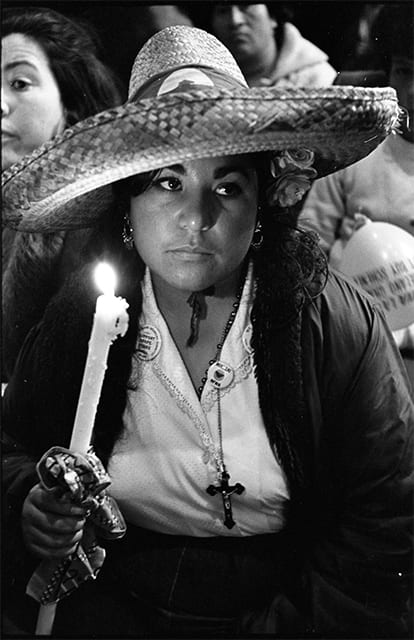Uploaded: Monday 10 May 2021
From California State University, Northridge

This photo of Carolina Franco was taken at the end of the day by John Kouns during the 1966 Delano to Sacramento march. Photo by John Kouns, courtesy of the Tom & Ethel Bradley Center.
The Tom & Ethel Bradley Center At California State University, Northridge received a US $ 350,000 grant from the National Endowment for the Humanities (NEH) to digitize some of the roughly 22,000 images in its Farmworker Movement Collection that tell the story and document efforts to keep farm workers in to merge into union organizations in the 1960s and early 1970s.
In addition to digitally preserving the images, the center collects the oral traditions of some people on the photos taken by John Kouns and Emmon Clarke to create a digital database that educators and other interested parties can access through the National Farm Workers Association, which will later be used United Farm Workers (UFW) and the people who made them happen.
“The agricultural labor movement formed a broad coalition of workers, students, activists and religious allies who won most of their early struggles by taking advantage of their diversity and pushing the country towards a pluralistic, multicultural form of democracy – a more perfect union,” the said Journalism Professor José Luis Benavides, Director of the Tom & Ethel Bradley Center. “The diversity of this coalition is reflected in the images of these two photographers, Kouns and Clarke, who joined the agricultural labor movement as participating visual workers and used their talent to document the movement.”
The NEH scholarship will help create a digital archive, accessible through the CSUN University Library website for digital collections, containing 6,600 images as well as 20 oral stories from people included in images and other publicly available digital resources to help the Telling stories of these involved in the movement.
The project will focus on regular community organizers, especially women, who have spent countless hours picket lines, demonstrating and lobbying consumers, local businesses and elected officials on behalf of the movement, often doing their own lives to sacrifice for their cause.
Benavides said the center plans to use the oral lore and imagery to create a do-it-yourself educational exhibit for schools, community centers, and others that can be tailored to a specific space and printed for public display upon request.


Philip Vera Cruz was a farm worker and union organizer. He was elected to the first board of the UFW in 1973 and was vice-president until 1977. Photo by Emmon Clarke, courtesy of the Tom & Ethel Bradley Center.
John Kouns’ images of the agricultural labor movement and the Selma to Birmingham march have been featured in many books and films as part of the American Labor Movement Archives at Wayne State University in Detroit, Michigan. Me. Kouns seldom turned his attention to the leaders. Rather, he was motivated by a sense of the movement of a people and turned his attention to people for inspiration. He documented the National Farm Workers Association in its infancy.
Emmon Clarke was picture editor for the UFW newspaper El Malcriado from 1966 to 1967. He documented the union’s activities on the picket line, at meetings and rallies across the country, and in the San Joaquin Valley labor camps. His photos captured both known and unfamiliar people who were involved in the movement’s efforts.
Both men use their unique status to stop taking multiple photos of the union’s chief leader, César Chávez, and instead focus on their organizers, activists, volunteers and farm workers, as well as their families.
The Tom & Ethel Bradley Center archives contain over a million images by freelance and independent photographers in Los Angeles between the 1930s and the present. The core of the center’s archive is a large collection of photographs by African American photojournalists. Oral records, manuscripts and other short-lived materials support the photographic collection.
The archives contain more than 70 oral records from African American photographers, civil rights leaders and organizers, those involved in the history of Los Angeles, journalists, the group of Mexicans in exile and the United Farm Workers, as well as the personal documents of many individuals and organizations. The Center’s Border Studies Collection examines the problems surrounding the border between the United States and Mexico.
Like this:
Loading…




